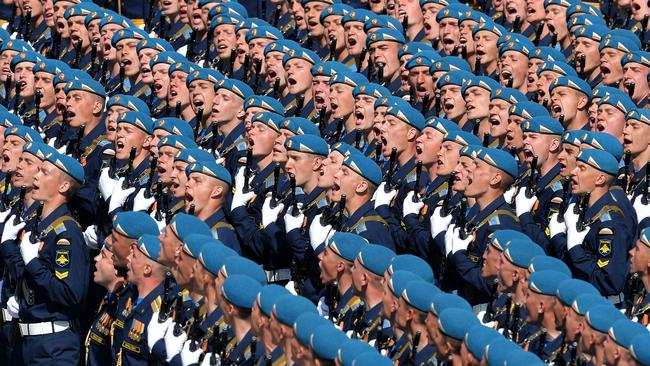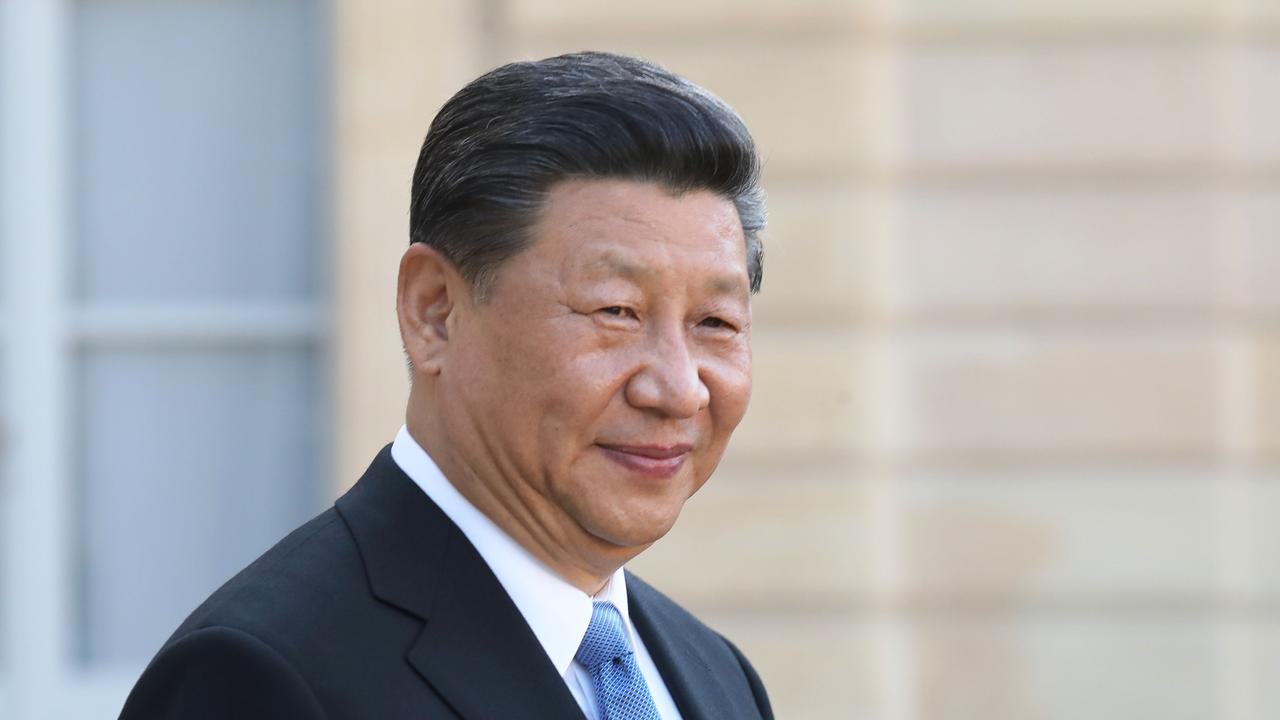Putin takes swipe at West in Moscow WWII victory parade
Thousands of Russian troops marched to celebrate the 70th anniversary of the Soviet Union’s World War II victory over Germany.

Thousands of Russian troops have marched across Red Square under the eye of President Vladimir Putin to celebrate the 70th anniversary of the Soviet Union’s World War II victory over Nazi Germany.
The largest Victory Day parade since the fall of the Soviet Union showed off Russia’s biggest nuclear missiles and some of Mr Putin’s best new military hardware, including the much touted Armata T-14 tank.
In comments subtly directed at NATO, Mr Putin said yesterday that military alliances were gaining strength and warned against a unipolar world — shorthand in Moscow for the global influence of the US. In another apparent jab at Washington, he said the principles of international co-operation were being ignored.
“We have seen attempts to create a unipolar world. We see how military-bloc thinking is gaining force. All this undermines the sustainability of global development,” Mr Putin said in front of war veterans, their chests heavy with medals, wiping away tears.
“Our common goal should be the development of a system of equal security for all governments, a system adequate (to deal with) modern threats, built on regional and global non-aligned bases. Only then can we ensure peace and tranquillity in the world.”
Unlike the parade 10 years ago, when US president George W. Bush sat next to Mr Putin to watch the soldiers march, this year’s celebrations, boycotted by most Western leaders, highlighted the divisions wrought by the crisis in Ukraine.
This year, Mr Putin was flanked by Chinese President Xi Jinping, underscoring Russia’s turn to the East in the face of Western sanctions. On the eve of the parade, Messrs Xi and Putin signed a raft of deals to cement closer ties, including a promise from China to offer up to $US25 billion ($31.5bn) to Russian companies that are facing an economic crisis at home.
In a conciliatory note, Mr Putin thanked Great Britain and the US for their efforts in defeating Nazi Germany. He also held for the first time a moment of silence for fallen soldiers and veterans who had passed away.
One of the parade’s most carefully choreographed events was the entrance of Defence Minister Sergei Shoigu on to Red Square to inspect troops. Driven in an elegant black ZIL convertible and dressed in uniform, Mr Shoigu crossed himself before entering the square.
The parade featured more than 140 warplanes and helicopters and almost 200 tanks, vehicles and missiles. Chinese troops marched alongside Russian troops and other soldiers from former Soviet republics who traditionally participate in the event.
Moscow invited nearly 70 heads of state to the parade, including US President Barack Obama and European leaders, almost all of whom boycotted it.
Some European leaders, however, who have closer trade, energy and diplomatic ties to Russia, have been forced to perform an awkward dance of paying tribute to Moscow and the legacy of the Soviet Union’s role in the war while dealing with the West’s attempts to isolate the Kremlin over the Ukraine crisis.
German Chancellor Angela Merkel declined an invitation to the parade but plans to hold a separate ceremony in Moscow overnight. Other leaders, including Czech President Milos Zeman and Slovak Prime Minister Robert Fico, were in Moscow for the holiday but did not attend the parade. The two planned to meet with one another during the parade.
Cuban leader Raul Castro was in Moscow for the festivities, and state television said the parade was being broadcast live in his country.
The heads of most former Soviet countries have also promised to attend the parade. However, Belarusian President Alexander Lukashenko, a longtime Putin ally who has increasingly warmed up to the West in the face of the Ukraine crisis, will hold his own Victory Day parade in Minsk that will include US troops.
The Wall Street Journal


